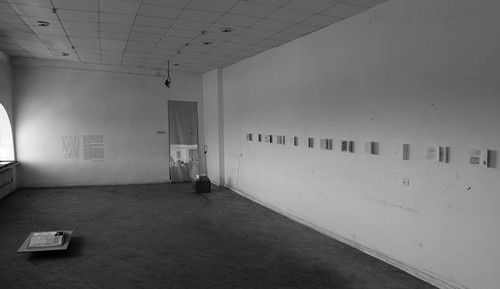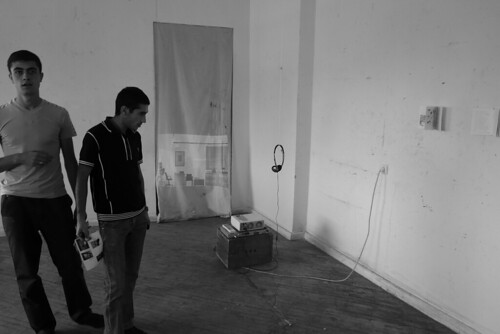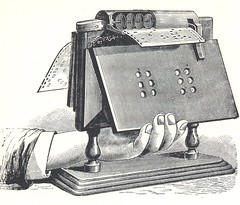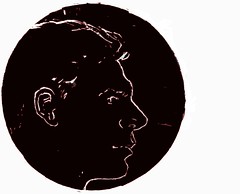Weak Monuments in Armenia

One of the 10 big metallic books (constructed after a consultation of 3000 documents) and one projection from the show "Weak Monuments" in Thessaloniki are exposed in Gyumbri, Armenia, in the frame of its 7th Art Biennial. A new installation interprets this part of the archive; the work was proposed as an idiosyncratic system of reading the city's urban fabric.
This particular presentation organized for the Gyumbri biennale is focused on the material selected from the murder of George Polk, the American journalist whose dead body was found on May 16th 1948 floating on the sea, in front of the White Tower, in Thessaloniki. Polk's last appearance was done while he was entering a boat, in his way to meet the leader of the communist guerilla government of the mountains Markos Vafiadis and have an interview with him; different narrations can be supported for his enigmatic death if we follow the documented material of the particular archive.
For the first panoramic presentation of more than 100 Thessaloniki's public murders, (10 metallic books and more than 30 projections), the chosen exhibition site was the Bar Association of the city itself. In this first show the use of an archive was immediately projected to a description of a city; an urban understanding of the reception of an invisible blood bath of "everyday life" is in the core of the first "weak monument"'s concept of the city. In the perspective of such an interpretation a weakening of the traumatic events organize already an urban performance. The archive itself shows its possible urban and political dimension. It is in this sense that the documentation of the murder spaces (the spaces that receive the murder in a city) and an archive of documents on the events function in an analogous way. In the Biennial of Gyumbri the show was spotting to an important political murder that could be significant for a local reading even today. A single murder takes the space of the showing room. Nevertheless the documents that are shown, as part of a multiple move, can be considered as "weak monuments" only if we access their information in a frame conceived by a multitude of other examples. Only while examining together a population of murders we can get an urban representation. A city is inaugurated when a mechanism of oblivion is installed on a built field. After such an observation, different architectures of control, justification or negation of oblivion can propose the responsibility of different readings about the events. Responsibility is related to a particular weakness that may rule the social memory.





No comments:
Post a Comment